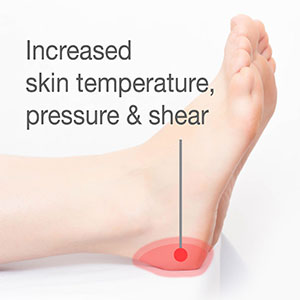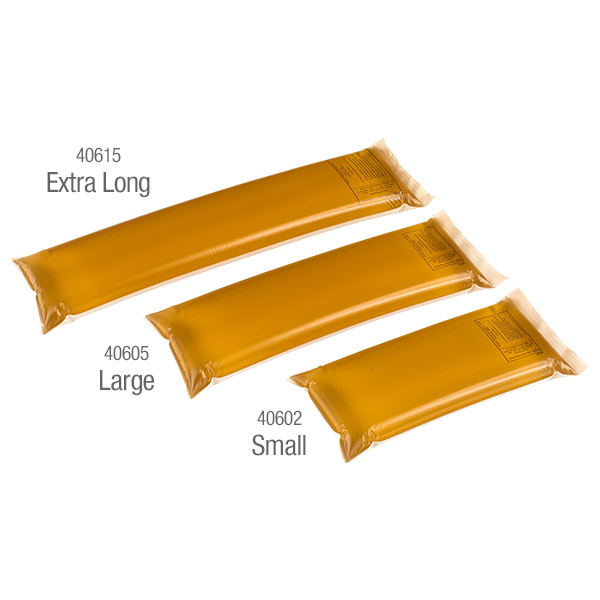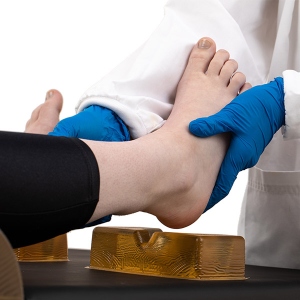An ambulatory surgical center (ASC) is a healthcare facility that focuses on providing same-day surgical care that includes diagnostic and preventative surgery. When looking at the ASC, it has transformed the outpatient surgical experience for millions of Americans by providing a more convenient surgical alternative. As much as 65% of all surgical cases performed take place in the outpatient ASC setting.
Read MorePressure Injuries in Ambulatory Surgical Centers
Monday, April 1, 2024 2:48:09 PM America/New_York
Ask the Expert Your Patient Positioning Questions at AORN 2024!
Monday, February 5, 2024 1:14:42 PM America/New_York
Ask the Expert at AORN 2024!

Dr. Heather D. Kooiker, DNP, MSN, RN, CNL, CNOR, CRNFA, is a Board-Certified Clinical Nurse Leader (CNL) who also holds Certifications in Perioperative Registered Nursing (CNOR), along with a Registered Nurse First Assistant Certification (CRNFA). Heather serves Baxter International as the Director of Global Medical Affairs for Patient Support Systems and Global Surgical Solutions. She is also a Professor of Nursing at Davenport University where she integrates Evidence Based Practice (EBP) and Research into the classroom, preparing the next generation of nurses. Heather maintains her clinical edge by working as a Registered Nurse First Assistant (RNFA) for an ambulatory plastic surgery center PRN. She is an active board member on the Western Michigan Chapter of AORN, she also sits on the executive board for the National Surgical Assisting Certification and is a peer reviewer for the CRNFA portfolio certification.
Visit booth #1230 to experience, firsthand, Action® patient positioning solutions. We know it is difficult to choose the right positioning devices for your patients through catalog browsing alone so we will have a variety of positioning devices available for real-time assessment.
Read MoreProtect the Heels with Evidence Based Interventions
Tuesday, August 22, 2023 12:40:22 PM America/New_York

The supine position is the most common surgical position with the patient lying on their back with the head, neck and spine in a neutral position. This position is not without pressure injury risk as there is increased pressure and shear forces to the scapula, occiput, elbows, sacrum, coccyx, and heels. Today we are going to look at ways to mitigate the risk for pressure injuries (PI) to the heel, related to the supine position. When a patient lies supine, all the pressure of their lower legs and feet rest on the heel. Heel PI represents approximately one third of pressure injuries acquired, and can result in increased morbidity and mortality. In some cases, heel pressure injuries can lead to amputation of the affected limb.
Read MoreThe Axillary Roll: An Essential Tool for Lateral Positioning
Tuesday, April 18, 2023 1:23:59 PM America/New_York

Essential goods are part of any great care or service. The operating room has countless examples of such materials. As perioperative professionals we know what is needed to provide the safest patient care.
Positioning patients safely and effectively is paramount to the success of all procedures. We often require more dedicated time and effort to position our patients than it takes to complete the entire surgical procedure. The lateral position involves multiple steps and items to achieve safety and success. A critical device for this position is the axillary roll. This device is a hot commodity in many operating rooms and at times this can lead to a short supply because of hoarding by one service team or another. The savvy OR team member looks ahead for the needs of the patient. However there are unplanned cases and emergent needs that arise throughout the day. Despite these spontaneous cases, the OR nurse must never sacrifice safety at the cost of anatomical exposure and position
Read MoreSafe Supine Positioning
Thursday, April 6, 2023 2:21:45 PM America/New_York

One of the highly common surgical positions is supine. This approach involves the surgical team’s watchful eyes to oversee a patient that will lie on their back with their arms either tucked or untucked to provide direct anatomical and surgical exposure to any area from the head and neck to the anterior aspects of the lower legs and feet. Supine position may be requested for a myriad of surgical procedures including everything from a thyroid, chest, cardiac, general, urology, orthopedic, or podiatry procedure to name a few. Given the wealth of clinical indications for the supine position, intentional time must be afforded for the perioperative team to consider all areas of required surgical access, as well as the areas not exposed during the surgical intervention.
Read More
